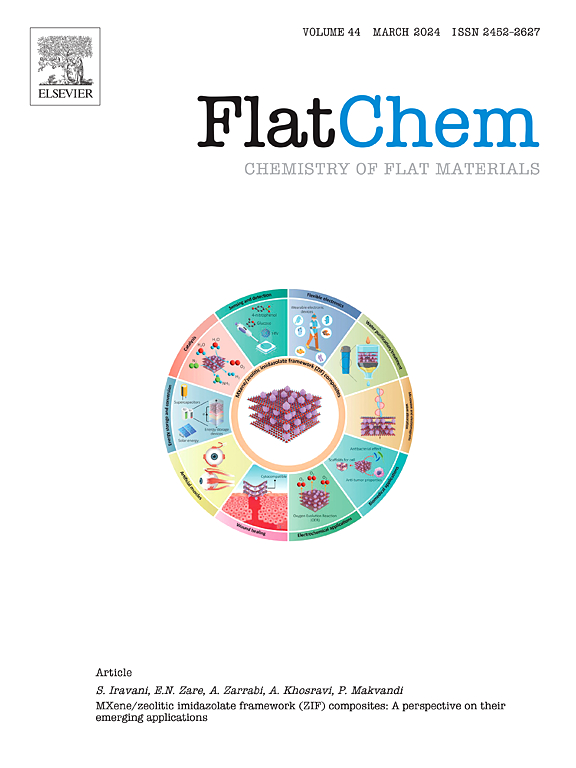Adsorption-based removal of organic dyes via a sustainably produced few-layered graphene: A potential method for industrial wastewater treatment
IF 6.2
3区 材料科学
Q2 CHEMISTRY, PHYSICAL
引用次数: 0
Abstract
This study discusses adsorption-based removal of six chemically distinctive organic dyes using graphene produced via a chamber explosion method. The method of graphene synthesis is sustainable as it produces zero waste, requires low energy and is scalable. The dye removal was investigated via UV–visible spectroscopy and proved to be efficient, with near-complete removal of all dyes within 10 min of adsorption by graphene. Specifically, 99 %, 100 %, 98 %, 95 %, 99 % and 100 % of removal was observed for Congo red, crystal violet, methylene blue, malachite green, indigo carmine and Rhodamine B, respectively, within 10 min. The physicochemical properties of the graphene were thoroughly characterised and it was shown to consist of few-layered forms, with high surface area despite being non-porous, and it comprised of almost 99 % carbon. The dye adsorption behaviour fitted pseudo second-order kinetics with Congo red showing the highest rate of 0.627 g/mg.min. Adsorption capacity of graphene was investigated via isothermal analysis using Congo red and indicated an estimated qmax of 44.24 mg/g. Congo red-adsorbed graphene was regenerated by calcination, and showed a retention of 99.5 % carbon, evidencing the robustness of the graphene. Subsequent reuse of calcined graphene for further dye adsorption indicated 97 % and 100 % dye removal within 15 and 60 min, respectively, indicating potential for recyclability. There appeared to be a direct relationship between fast dye adsorption and the number of rotatable bonds within each dye that led to improved π-π stacking and electrostatic attractions. This sustainably-produced graphene could be a good contender for specialised applications in water purification against conjugated dyes or related organic contaminants, due to its fast, irreversible adsorption capability and recyclability.

通过可持续生产的少层石墨烯吸附去除有机染料:一种潜在的工业废水处理方法
本研究讨论了通过室爆法产生的石墨烯吸附去除六种化学上独特的有机染料。石墨烯的合成方法是可持续的,因为它产生零浪费,需要低能源,可扩展。通过紫外可见光谱研究了染料的去除效果,证明了石墨烯在吸附后10分钟内几乎完全去除了所有染料。其中,刚果红、结晶紫、亚甲基蓝、孔雀石绿、靛胭脂红和罗丹明B的去除率分别为99%、100%、98%、95%、99%和100%。石墨烯的物理化学性质得到了彻底的表征,它被证明是由很少的层状结构组成的,尽管无孔,但具有很高的表面积,而且它几乎由99%的碳组成。染料对刚果红的吸附速率最高,为0.627 g/mg.min,符合准二级动力学。用刚果红等温分析研究了石墨烯的吸附能力,估计最大吸附量为44.24 mg/g。刚果红吸附的石墨烯通过煅烧再生,并显示出99.5%的碳保留率,证明了石墨烯的鲁棒性。随后对煅烧的石墨烯进行进一步的染料吸附,在15分钟和60分钟内分别有97%和100%的染料去除率,表明了可回收性的潜力。染料的快速吸附与每个染料内可旋转键的数量之间似乎存在直接关系,从而导致π-π堆积和静电吸引力的改善。由于其快速、不可逆的吸附能力和可回收性,这种可持续生产的石墨烯可能是一种很好的竞争者,可用于针对共轭染料或相关有机污染物的水净化。
本文章由计算机程序翻译,如有差异,请以英文原文为准。
求助全文
约1分钟内获得全文
求助全文
来源期刊

FlatChem
Multiple-
CiteScore
8.40
自引率
6.50%
发文量
104
审稿时长
26 days
期刊介绍:
FlatChem - Chemistry of Flat Materials, a new voice in the community, publishes original and significant, cutting-edge research related to the chemistry of graphene and related 2D & layered materials. The overall aim of the journal is to combine the chemistry and applications of these materials, where the submission of communications, full papers, and concepts should contain chemistry in a materials context, which can be both experimental and/or theoretical. In addition to original research articles, FlatChem also offers reviews, minireviews, highlights and perspectives on the future of this research area with the scientific leaders in fields related to Flat Materials. Topics of interest include, but are not limited to, the following: -Design, synthesis, applications and investigation of graphene, graphene related materials and other 2D & layered materials (for example Silicene, Germanene, Phosphorene, MXenes, Boron nitride, Transition metal dichalcogenides) -Characterization of these materials using all forms of spectroscopy and microscopy techniques -Chemical modification or functionalization and dispersion of these materials, as well as interactions with other materials -Exploring the surface chemistry of these materials for applications in: Sensors or detectors in electrochemical/Lab on a Chip devices, Composite materials, Membranes, Environment technology, Catalysis for energy storage and conversion (for example fuel cells, supercapacitors, batteries, hydrogen storage), Biomedical technology (drug delivery, biosensing, bioimaging)
 求助内容:
求助内容: 应助结果提醒方式:
应助结果提醒方式:


